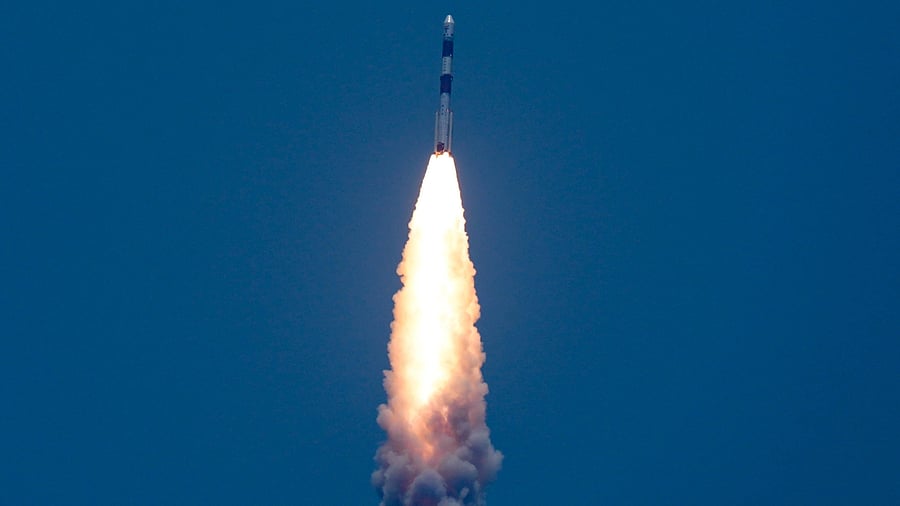
Indian Space Research Organisation's (ISRO) Aditya-L1.
Credit: PTI Photo
India’s first space-based observatory to study the Sun, Aditya-L1, has undergone a trajectory correction, the Indian Space Research Organisation (ISRO) said on Sunday.
It said a Trajectory Correction Manoeuvre (TCM), originally scheduled as a provisional operation, was performed on October 6, for about 16 seconds.
It said the spacecraft is "healthy" and on its way to L1, the first Lagrange point in the Sun-Earth system where it will be positioned, in January 2024, to observe the Sun.
The space agency said the manoeuvre was necessary to correct the trajectory after evaluating the Trans-Lagrangian Point Insertion (TL1I) manoeuvre which was performed on September 19.
“TCM ensures that the spacecraft is on its intended path towards the halo orbit insertion around L1. As Aditya-L1 continues to move ahead, the magnetometer will be turned on again within a few days,” ISRO said.
On September 30, the agency said the spacecraft had left the Earth’s sphere of influence and travelled beyond a distance of 9.2 lakh kilometres from the Earth.
The L1 advantage
L1 – located approximately 15 lakh kilometres from the Earth – is one of the five Lagrange points where the gravitational force of the two primary bodies (the Sun and the Earth) precisely equals the centripetal force required for a small object (the spacecraft) to move with these bodies.
Aditya-L1, launched on September 2, carries seven payloads designed to closely study the Sun through multiple observation channels. The spacecraft’s positioning, in a halo orbit around L1, will give it the advantage of minimal orbit corrections and fuel requirements.